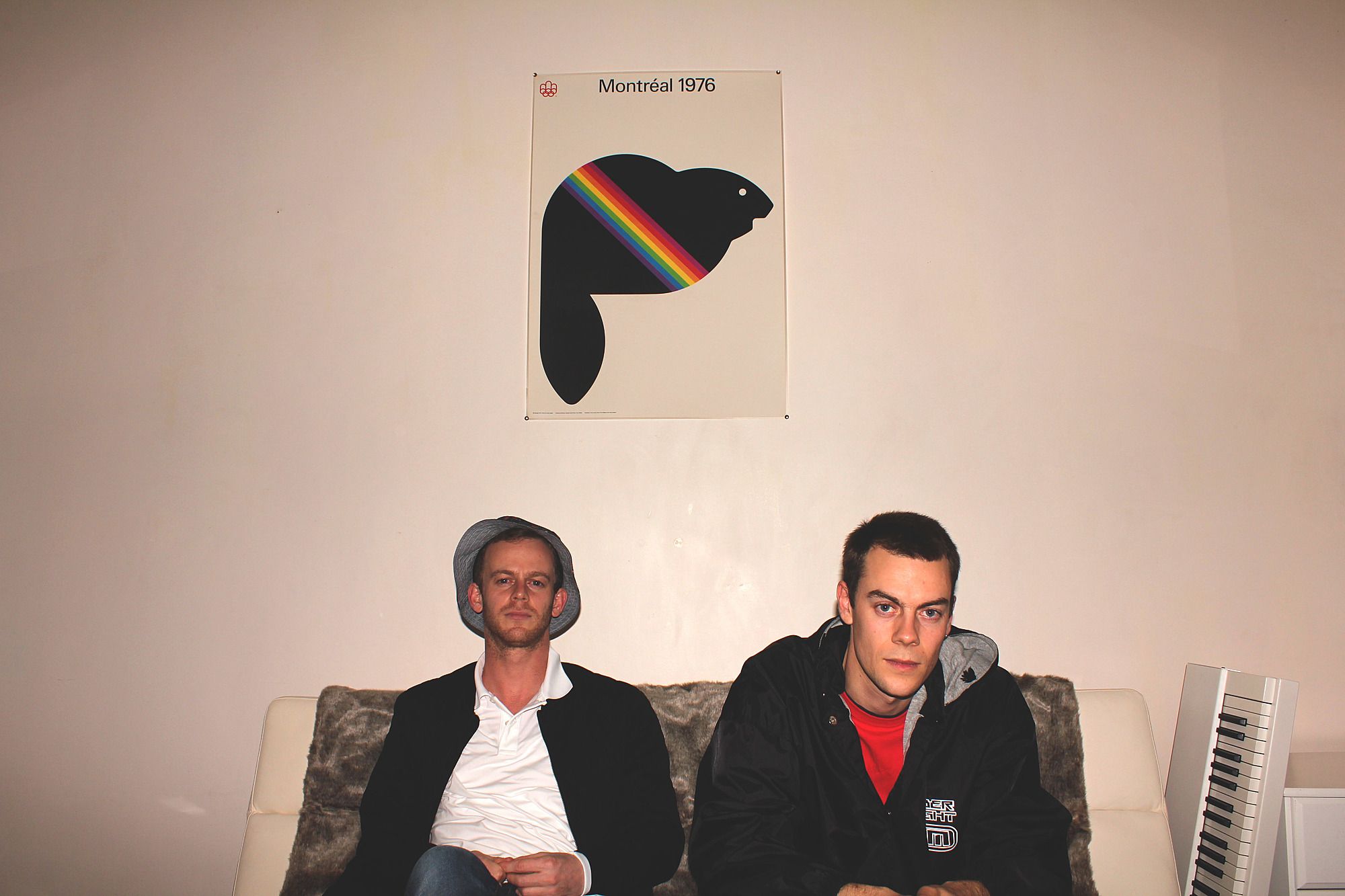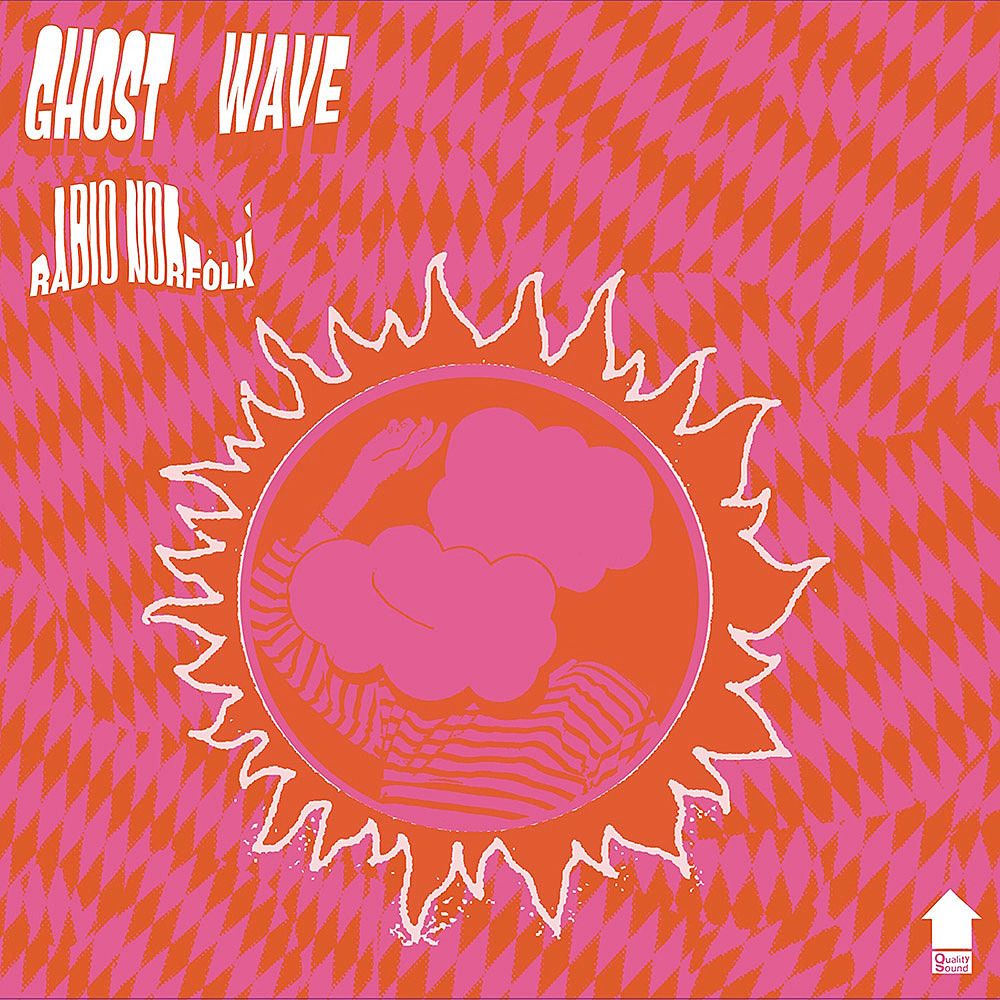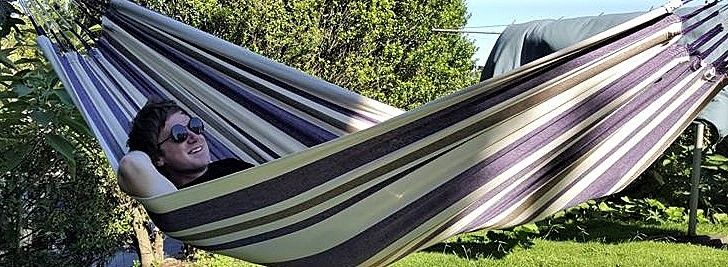A Vivid Alliance: Ghost Wave’s Radio Norfolk
James Manning takes a spin on Auckland staple Ghost Waves's latest offering, Radio Norfolk, and looks at where the band's come from and where it's going.
Matthew Paul and Eammon Logan are obsessed with making music, and together they can do it remarkably quickly. Matt, 30, guitarist and lyricist, and Eammon, 26, drummer and sometimes-DJ, constantly consume sound, listening for something new to psyche each other out on. The pair form the core of Auckland indie-rock band Ghost Wave, which earlier this year released sophomore album Radio Norfolk.
The album’s a contribution to Auckland’s bustling music scene, one championed by fragments of post-punk, dreamy guitar-pop, synth-pop and underground electronica and hip-hop. It’s a continuation of Ghost Wave’s sound, too. Matt and Eammon originally played house-influenced tunes separately before playing together in 2009. Frustrated with his equipment breaking live, Matt began writing and playing with a guitar and they soon filled remaining positions with muso friends. With one EP and two LPs, Ghost Wave have built a reputation on psychedelic indie-rock, taking queue from an alternative scene that owned Auckland venues a decade earlier.
They’re one of the regrettably few active alternative bands in Auckland today. While the guitars and distortion live on in young upstarts Fazerdaze and Merk, it’s a genre left feeling the brunt of emotionless pop. Not that Ghost Wave have let this stop them. In performance, they play either as a full band or a DJ set, and perhaps this is where their trump card lies. Their indie-gone-psyh rock is rooted in that house-influenced background; music punched with all the grit and rhythm to appeal to dual audiences.
“We’re from different ends of the spectrum,” says Matt. “I align myself with melody, I’m more lyrically-inclined. That’s the right brain and Eammon’s the left; he’s heavy on the ‘beat’ side of things.” For years, they’ve nurtured this collaborative aesthetic, yet it’s only recently they’ve taken the partnership further, immersing themselves in every stage of music production.
Released through Flying Nun Records, Radio Norfolk’s an intoxicating, alluring trip through garage-psychedelia that not only builds from the jangly, catchy, lo-fi sound of their 2013 debut album Ages but expands on it. It’s pulsating, wide-screen music informed by a vast palette of influences. Primal Scream’s Screamadelica, The Stone Roses’ eponymous debut, The Brian Jonestown Massacre and ‘60s psychedelia come to mind, though these neither overbear nor outshine the imaginative leap in song writing and composition taken by the duo themselves. You can feel the ecstatic energy of a new confidence, and it feels really fucking good.
It’s another triumph for the New Zealand band that’s gone from strength-to-strength since the release of their 2011 debut EP on Arch Hill Recordings. 2013’s Ages echoed the lineage of the ‘80s Dunedin sound and was warmly received here and abroad. The band went on to play CMJ music festival and live on KEXP, while also gaining attention from NME. A tour of the states beckoned, hitting major cities like Los Angeles and New York, catching performances by likeminded genre-bending acts Panda Bear and Actress in their downtime.
Returning to Auckland at the end of 2014, Ghost Wave started jamming away at the tunes that would form Radio Norfolk. On tour they operate as a five-piece, but dialling it back to the core two allowed Matt and Eammon to hone the music’s direction and production, something they became enamoured with after the release of Ages. “With Ages, we recorded at Roundhead Studios and did these sessions that we didn’t produce,” says Matt. “It has a great production sound and it’s not one we could have achieved otherwise. But after that, we realised it was important for us to learn and be as much a part of what we were doing as we could.”
Taking more control over their music quickly became their ethos. Back then, their focus was on playing live, nailing the instrumentation. “With this album,” adds Eammon, “we were totally keen to get loose in the studio and build those textures; get real experimental with it.”
From the shining horns on opener ‘Honey Punch’, Radio Norfolk explores 50 minutes of kaleidoscopic, layered, 60s-meets-90s-meets-now psychedelic indie-rock. It’s visceral and harmonious, progressive but not repetitive. The vocals drift in and out and are at times drowned amid a haze of guitars, horns, tambourines, orchestral sounds, keys, electronics and samples. It’s heavy on the groove; the baggy big-beats and rhythmic percussion echo the early 90s Madchester scene, a sub-genre blending dance culture and British independent rock, with a penchant for MDMA and LSD all-nighters. Hedonism was its game, one shared with Radio Norfolk.
Norfolk was tracked, recorded and mixed at various spots around Auckland, but mostly at a jam-space on Hadlow Terrace in Grey Lynn and at Matt’s personal recording studio in his Auckland flat. One of the first tunes released preceding the album, ‘Blues Signal 79’, was a major turning point, paving the way for the freewheeling, neo-psychedelic grooves to follow. “It was the first track where we realised what the album was starting to sound like,” says Eammon. “We threw a bunch of horns and mellotron in there, and Matt layered a lot of orchestral sounds.” ‘Blues Signal 79’ is probably the most far-out tune on the record; not since An Emerald City has a New Zealand band fused eastern-influenced world music with their own so fluently. Leftover from the Ages sessions, it bridges the gap between then and now. Remoulding the tune with additional layers and instrumentation gave it a new life, and it was here the pair found Norfolk’s winning recipe.
It takes both of them to jam-pack a song with so many ideas. They’re at their best bouncing concepts off each other and moving quickly, intuitively, is key to keeping things fresh and lively. Songs like the surging ‘Spaceman’ and the guitar-jerking ‘All U Do Is Kill’ highlight the variety. The former’s stadium-sized orchestration meets swirling electronics, and the latter’s abrasive, drone stabs urge the beat forward. The trip’s pulled together by album closer ‘Playin’ Lines’, complete with bongos and guitars atop warped feedback, looped through to the climactic ending. Self-production, says Eammon, gave them greater rein to explore new territory, bringing to light new ideas and sounds that would have otherwise gone unexplored. “It’s an important part of the creative process; you can shine a light on certain parts of a song and add so much more.”
If Ages was built from the ramshackle rock of the Brian Jonestown Massacre, The Rolling Stones and Deerhunter, Norfolk smears pastel-coloured grooves right over the snarling swagger, and mines the likes of disco and funk “A lot of colourful tunes would be the running theme,” Eammon notes on the album’s provenance. “I was getting into James Brown and funk, and from there I dug into disco. I think that was influential, even in the way it was mixed. Making it real heavy on the rhythm end, making sure there’s a solid groove section.”
Matt’s home recording studio added to the album’s warm, summery tonality too. “That place got way too hot, a couple of instruments got cooked,” Eammon laughs. “We spent a lot of afternoons in the sun, mixing and throwing down weird textures over the top. We’d be jamming with the doors wide open into the evening, and I still think in some tracks I can hear cars driving past.”
Not everyone’s been won over by Ghost Wave’s nostalgia, mind you. Produced by The Clean’s Thomas Bell, Ages couldn’t quite escape comparisons to the old Flying Nun bands and 60s rock and roll. In a moderate-at-best review on Pitchfork, they were criticised for playing too closely to their forebears. Lots of energy and passion but not many novel characteristics, was the overriding complaint. It’s not something the band care for; they’re too busy consuming and creating and enjoying the process. There’s no time for the overtly theoretical scrawlings of high-brow music snobs; just enough for jams and maybe some lucid storytelling.
“The goal for every songwriter is to write really clearly, but it’s not really something I’m necessarily in control of,” says Matt. “I go with the subconscious thing. I’m at my best when I’m in front of the microphone and I can just feel it out.” His voice complements the haze, chanting bending and bleeding through, acting an instrument all its own.
In conversation, Matt and Eammon both reiterate a reliance on feeling guided by the gut. It’s what drives much of their music and music videos too, like the vintage ‘All U Do Is Kill’. The creative genius of Eammon, it tells a tale of the fictional DJ Sunny Crypt with buzzy Nintendo graphics, television static, floating skulls and night-time skateboarding. Eammon created it entirely on an ancient MacBook, and it strikes another token of their DIY-ethos.
The only aid Ghost Wave needed for their latest effort was with mastering. Peter Kember of iconic 80s British alternative band Spaceman 3 lent his hand, leaving a godfatherly imprint. He’s worked behind the scenes on similarly mind-altering records, including MGMT’s sophomore Congratulations and Panda Bear’s astonishing Panda Bear Meets the Grim Reaper, and pulls together Ghost Wave’s album nicely. Matt reached out to the virtuoso by fanmail. “He felt I had some stuff he’d be keen to give a go, but was a little surprised there was a record behind it.” Kember had a fair sense of the record Ghost Wave were aiming to achieve, and initial drafts were collaboratively fine-tuned. “We didn’t want to have a really bright record, but he definitely made it more listenable,” says Matt.
Despite the effort on the mix, it’s certainly not an over-produced piece, and retains an organic, live aesthetic. All tracks were based on the band playing live, then tracked and recorded on top until the duo were happy. It’s a process of building up the songs, says Matt, shrugging it off as part of the profession. “Music making is all about process of understanding, understanding what you’re doing. Knowing the right things, the right buttons to push within that process.” The pair, they tell me, have become a lot more comfortable and confident with this. It speaks through Norfolk, and comes out swinging against the naysayers.
Ghost Wave’s vivid alliance has struck deep into the spirit of DIY. Like many contemporary musicians they’ve taken the independent route and come out the bolder, and it’s something they intend to pursue further. “I feel like we came a long way with Norfolk,” reflects Matt, “and it would be interesting to change the rhythm of the work, the pace of the work, and maybe do some stand-alone pieces.” He asserts with a smirk that they’re certainly not following Hollywood, let alone trending culture. Auckland’s alternative scene may tread sparsely, but it’s alive and thriving in Norfolk. Escape into summer with its warm embrace, tune into its lush rhythms and listen closely to its urgent, beating pulse; psychedelic rock has rarely sounded so immersive and rewarding.



